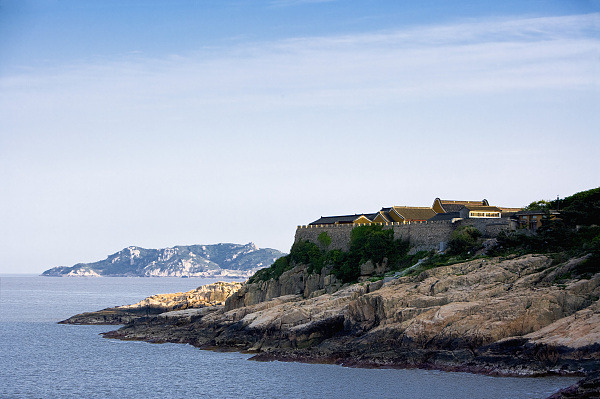"Zhejiang Cultural Imprints" is a series of introductory articles introducing some of the most influential cultural heritages and cultural imprints in Zhejiang province. Today's topic is about Mount Putuo, one of the four sacred Buddhist mountains, which is located in the estuary of the Qiantang River, southeast of the Zhoushan Archipelago.

(Mount Putuo)
Among Chinese religious sites, Putuo Mountain, the "Island of Guanyin," stands out as a fascinating embodiment of China's vibrant Buddhist tradition. A small island in the East China Sea, it has been the single most important pilgrimage site for the worship of Guanyin, the beloved Bodhisattva of Compassion, who is venerated from Sri Lanka to Japan.
Attracting thousands of visitors every year, the site has accumulated a multi-layered historical record, as it appears in different lights in poems, biographies, maps, and legends across the centuries. From its foundation in Mahayana Buddhist scriptures to its descriptions in local histories known as "gazetteers," Putuo Mountain's distinctive profile makes it an abiding landmark throughout the checkered history of Chinese Buddhism.
Mount Putuo is a world-famous Buddhist shrine. The history of religious activity goes back to the Qin Dynasty (221BC-206BC). During the Tang Dynasty (618AD-907 AD), with the increasing development of the Maritime Silk Road, Putuo Mountain enjoyed geographical advantages and quickly became the center of Chinese Buddhism. By the end of the Qing Dynasty (1616AD-1911AD), there were three major temples, 88 convents, 128 thatched shrines, and thousands of monks on Putuo Mountain. It was said that every corner was dotted with a temple and you could meet a monk at the end of each path.
Deeply affected by Buddhism culture and its splendid natural scenery, Putuo Mountain became the Buddhist Kingdom on the Sea. With temples dotting the hilly island beneath canopies of green trees, Puji Temple, Fayu Temple, and Huiji Temple are the three largest temples on Putuo Mountain.
Mount Putuo is not only famous for its magnificent sea scenery but also for its fantastic mountainous landscape. People say that "West Lake perfectly combines the beauty of mountains and lakes, while Putuo Mountain flawlessly combines mountains and sea scenery".




